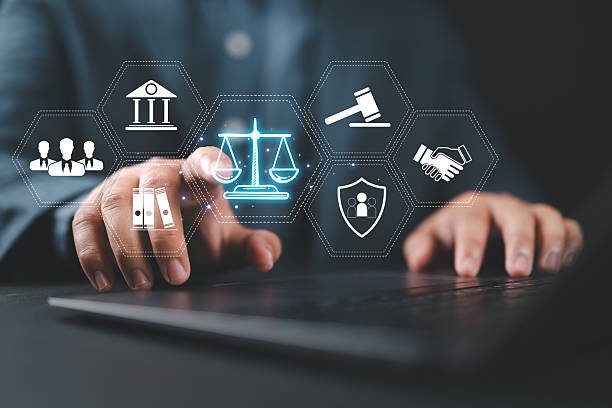Introduction
Ever stumbled upon a string of numbers like 185.63.263.20 and wondered, “What on earth is that?” You’re not alone. In our hyper-connected world, sequences like this pop up in logs, error messages, or even website analytics, often leaving us scratching our heads. At first glance, it looks like just another IP address—but is it really that simple? Or does it hide a story of digital intrigue, security implications, and tech mysteries waiting to be uncovered?
This article dives deep into the enigma of 185.63.263.20, unpacking what it could mean, why it matters, and how it connects to the invisible web of the internet. Buckle up—things are about to get a little geeky and a lot fascinating!
Understanding 185.63.263.20: What Could It Be?
Is It Really an IP Address?
You might think, “Well, that’s definitely an IP, right?” Not so fast! Here’s why: standard IPv4 addresses are structured in four blocks ranging from 0 to 255 (like 192.168.0.1). Notice anything odd about 185.63.263.20? That third block reads 263, which is beyond the valid 0–255 range.
So, technically, 185.63.263.20 isn’t a valid IPv4 address—but that doesn’t mean it’s meaningless. Let’s explore a few possibilities:
-
Typographical Error: Perhaps it was intended to be 185.63.263.20 → 185.63.163.20 or 185.63.253.20. Small number swaps can cause big confusion.
-
Obfuscation or Coding: Sometimes developers or hackers use “impossible” IPs to mask locations in logs or error reports.
-
Placeholder in Documentation: In some training materials or test scripts, unrealistic IPs are used to demonstrate concepts without pointing to real servers.
Why Do People Keep Digging Into Numbers Like 185.63.263.20?
Curiosity about unusual IP-like sequences is stronger than we think. Here’s why tech enthusiasts, cybersecurity experts, and even everyday netizens get hooked:
-
Security Audits: A misformatted IP in logs could hint at attempted hacks or system misconfigurations.
-
Data Tracking: Analysts might track these numbers to see if they’re linked to bots, spam, or rogue servers.
-
Digital Mystique: Let’s be honest—some folks just love a good puzzle. Numbers like these invite speculation.
It’s like spotting a strange symbol in a historical manuscript. It might mean nothing… or it could unlock a story.
Exploring the Potential Origins of 185.63.263.20
Could It Be a Mistyped IP in Cybersecurity Contexts?
In cybersecurity forums, people sometimes post weird IPs they’ve spotted. 185.63.263.20 could be one of those anomalies. Maybe someone meant to type 185.63.163.20 or 185.63.126.20. Even a small typo can:
-
Trigger firewall alerts
-
Cause failed server connections
-
Lead to false-positive malware warnings
Could It Be Part of a Test or Simulation?
Developers frequently create “dummy IPs” for testing:
-
In training environments: No real server should be contacted.
-
For network stress tests: Random sequences simulate traffic spikes.
-
Educational purposes: Students learn how network protocols work without hitting actual systems.
So, 185.63.263.20 might just be a digital actor in someone’s IT classroom drama.
Digital Safety Lessons from 185.63.263.20
Even though this IP is invalid, it reminds us of important digital hygiene practices:
-
Double-check IP entries: One wrong digit can block access or trigger security systems.
-
Avoid clicking unknown links: Cyber attackers often hide behind similar number sequences.
-
Monitor logs carefully: Strange entries might signal legitimate misconfigurations—or the first hint of a cyber threat.
FAQs About 185.63.263.20
Q1: Can I ping 185.63.263.20 to see where it leads?
No, pinging will fail because 263 is outside the valid range for IPv4 addresses.
Q2: Is 185.63.263.20 linked to malware?
Not directly. It could appear in logs as a typo or test value, but there’s no verified malware association.
Q3: Could it ever become a valid IP?
Not under IPv4 standards. For it to be valid, each block must be 0–255.
Q4: Why do I sometimes see similar numbers in error logs?
Developers often use fake or out-of-range IPs to simulate edge cases, test code, or illustrate networking principles.
The Cultural Side of Strange Numbers
Believe it or not, sequences like 185.63.263.20 occasionally make waves outside tech circles. Internet forums, Reddit threads, and hacker chat rooms often debate these oddities. They’re not just numbers—they become memes, urban legends, or conversation starters in digital culture.
-
People assign them personalities: “That’s the haunted IP!”
-
They inspire puzzles and challenges: “Can you trace where it would go?”
-
They become shorthand in teaching: “Avoid the 185.63.263.20 mistake.”
Conclusion: Why 185.63.263.20 Matters
Even though 185.63.263.20 can’t exist as a real IP, it serves as a fascinating lens into digital life. It reminds us of the intricacies of networking, the importance of careful monitoring, and the quirky human tendency to find patterns—even in nonsense.
Next time you encounter a strange sequence like this, don’t dismiss it. Whether it’s a typo, a test, or a playful Easter egg from a developer, it tells a story about how interconnected—and sometimes whimsical—the digital world can be.
Takeaways:
-
185.63.263.20 is technically invalid but still sparks curiosity.
-
Typos, testing environments, and educational examples are likely reasons for its appearance.
-
Paying attention to unusual numbers can enhance cybersecurity awareness.
-
The internet culture often transforms these anomalies into stories, jokes, or legends.
If you’d like, I can also create a companion visual infographic that breaks down the anatomy of 185.63.263.20, why it’s invalid, and what each number could represent in a “real” IP. This makes the article even more engaging for readers.
Do you want me to make that infographic?

